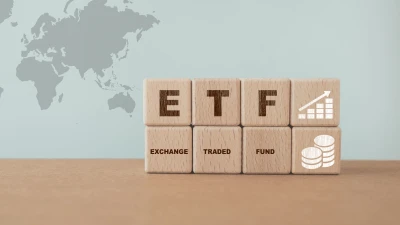Caution warranted amid rapid inflows to fixed income ETFs



Increased access to fixed income via ETFs could present diversification risk for investors, believes BondAdviser head of investment solutions Charlie Callan, if the vehicle is holding large portions of singular bonds.
At the end of last year, the Australian Prudential Regulation Authority announced it would be phasing out AT1s – or hybrid bonds – in 2027 due to concerns regarding their reliability and complexity in future crises, meaning investors will need to seek alternative fixed income offerings to support their defensive portfolio allocation.
At the same time, growing interest in ETFs has created an opening for investors to access fixed income more easily and at a lower cost and entry point. According to the latest monthly figures from Betashares, Australian investors poured $1.2 billion into fixed income ETFs in August, including $779 million into Australian bond-focused ones.
Speaking on an Institute of Managed Account Professionals podcast, Callan said this development of fixed income ETFs has been a positive addition to investors’ “toolkit”, easing their access to this market and providing them with alternatives to these hybrid bonds.
“What we’ve seen, particularly in the past year or so, has been a rapid inflow into some of these things like subordinated tier two debt and that has certainly been one of the biggest beneficiaries of this hybrid market ceasing to exist,” he said.
“The benefit, however, is now starting to create some risks that need to be better understood by investors.”
But Callan, who has been working at the Melbourne-based research house for seven years and specialises in fixed income, warned some ETFs are entering the market with very large proportions allocated to singular bonds, creating a diversification risk for investors.
“For instance, an ETF owning more than 10 per cent of a single bond line, that might seem like a small number, but the truth is that everyone on the street knows that they hold that, and they know exactly how much they hold of it and so it does create a few risks in the event of a market sell-off. If you were to have big outflows to some of these ETFs, it makes it a bit of a forced seller in that asset class,” he said.
“Everybody on the street knows that, and that’s always a recipe for a bad price. So, even though tier two ETFs might be passive products, you as an investor still need to be very active and alert to the risks that are present within the product itself.”
Improving diversification, Callan said, is the key solution to this challenge, with different pathways open for standard and sophisticated investors.
“Now we think there’s two broad solutions to that. Number one is better diversification. So, picking products that own lots of different bonds, or you can, if you’re really sophisticated, go out and access this market directly so you’re not having that co-mingled risk as well.”
Callan added: “Whether it’s an ETF or if you’re holding it directly, we think that it’s an asset class that people need to be involved in, but we’re certainly trimming our exposure at the moment.”
Recommended for you
Avantis Investors has launched its first active ETFs in the Australian market, backed by American Century Investments, and has told Money Management that future expansion will be based on adviser demand.
Money Management examines the last three months of ETF launches, with Betashares being particularly active during the quarter.
ETF provider Global X has expanded its GARP ETF range with the launch of a vehicle focusing on Australian equities.
GCQ Funds Management has appointed a distribution director to work with advisory groups, who joins from Ausbil Investment Management.











